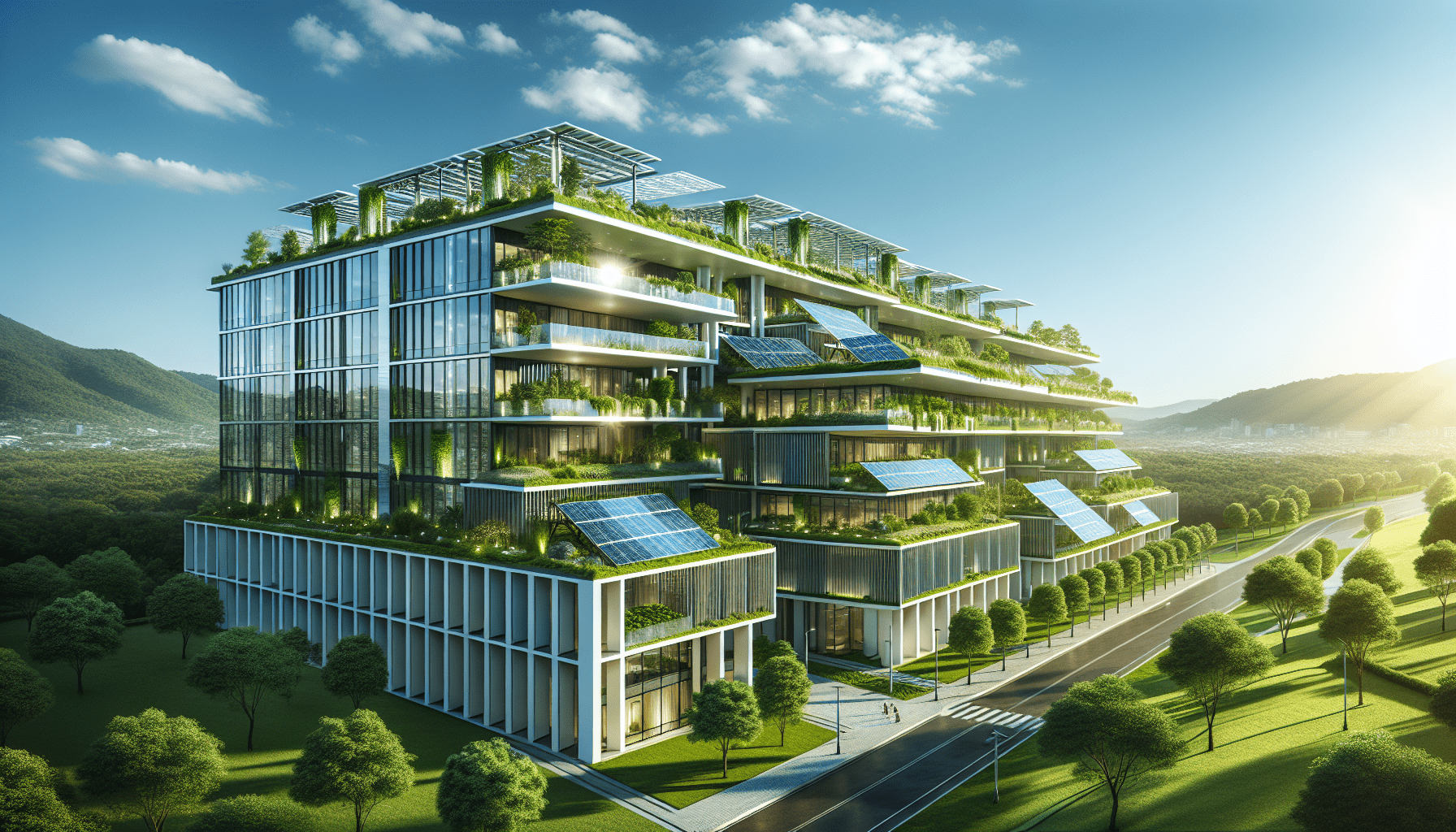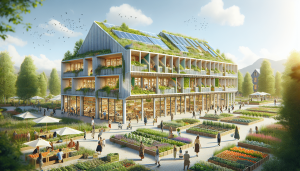Hey everyone! Today, let’s dive into an exciting topic that’s reshaping the world of construction—sustainable architecture. In our article, “How Does Sustainable Architecture Affect Building Codes?,” we explore the dynamic relationship between eco-friendly design and regulatory standards. Sustainable architecture incorporates innovative practices and materials to minimize a building’s environmental impact. As these sustainable approaches gain traction, building codes evolve to ensure that new structures meet high standards for energy efficiency, resource conservation, and overall sustainability. Join us as we uncover how these changes are not only good for the planet but also set the stage for smarter, greener urban development. Have you ever wondered how sustainable architecture influences building codes? Sustainable architecture isn’t just about creating energy-efficient and environmentally friendly buildings. It’s a movement that reshapes how we think about construction, design, and our living spaces. As we dive into this topic, we’ll explore how these green principles are changing the regulations and codes designed to keep our buildings safe, efficient, and environmentally sound.
Understanding Sustainable Architecture
Sustainable architecture revolves around strategies and designs that minimize the environmental impacts of buildings. Its main goal is to achieve energy efficiency, reduce carbon footprints, and promote the use of renewable resources. By integrating natural elements and innovative technology, sustainable architecture aims to create spaces that not only conserve energy but also enhance the well-being of occupants.
Defining Sustainable Architecture
Sustainable architecture, sometimes known as green architecture or ecological architecture, focuses on the principle of reducing environmental impact. This form of design considers the entire lifecycle of a building, from construction materials to dismantling, ensuring minimal waste and maximum efficiency.
Key Principles of Sustainable Architecture
Several core principles guide sustainable architecture, including:
- Energy Efficiency: Using less energy through better design, insulation, and energy-efficient systems.
- Renewable Resources: Incorporating materials like bamboo or reclaimed wood that are renewable and have a smaller environmental footprint.
- Water Conservation: Implementing systems to reduce water usage, such as rainwater harvesting or low-flow fixtures.
- Indoor Environmental Quality: Ensuring good air quality, natural light, and thermal comfort for occupants.
- Sustainable Sites: Considering the environmental condition of the site and minimizing the impact of the building on the surrounding ecosystem.
Evolution of Building Codes
Building codes have evolved significantly over time. Traditionally, these codes focused mainly on the safety, health, and well-being of occupants. They provided standardized regulations for structural integrity, fire safety, electrical systems, plumbing, and other fundamental aspects. However, as environmental concerns have become more urgent, building codes have expanded to include sustainability criteria.
Traditional Building Codes
Traditionally, building codes were structured around:
- Safety and Health: Ensuring buildings were structurally sound and safe to occupy.
- Functionality: Making sure buildings met basic functional requirements.
- Fire Protection: Preventing and mitigating risks related to fire.
- Sanitation and Plumbing: Addressing health issues related to water supply and waste management.
Integration of Sustainability
With the advent of the sustainability movement, building codes have begun to incorporate requirements that focus on energy efficiency, resource conservation, and environmental protection. This shift represents a significant change in how architects and builders approach construction projects.

How Sustainable Architecture Shapes Building Codes
Sustainable architecture has a profound impact on building codes. As the push for greener buildings grows, these regulations adapt to incorporate sustainable practices. This shift is evident in various aspects of building design and construction.
Energy Efficiency Standards
One of the most significant changes in building codes driven by sustainable architecture is the emphasis on energy efficiency. This includes:
- Insulation and Windows: Requirements for higher-grade insulation materials and energy-efficient windows to reduce heating and cooling needs.
- Heating, Ventilation, and Air Conditioning (HVAC): Standards for more efficient HVAC systems that consume less energy.
- Lighting: Mandates for energy-saving light fixtures and the use of natural lighting where possible.
Renewable Energy Integration
Building codes now often encourage or require the use of renewable energy sources. This can include:
- Solar Panels: Guidelines for the installation of solar panels on rooftops.
- Geothermal Systems: Use of geothermal energy for heating and cooling.
- Wind Turbines: Regulations on the integration of wind energy systems in building designs.
Water Conservation Measures
Water conservation is another critical area influenced by sustainable architecture. Building codes are increasingly including:
- Low-flow Fixtures: Mandatory installation of low-flow toilets, faucets, and showers.
- Rainwater Harvesting: Requirements for systems that collect and use rainwater for non-potable purposes.
- Greywater Systems: Guidelines for recycling greywater for irrigation and other uses.
Material Sourcing and Waste Management
Building codes now often address the origin of materials and the management of construction waste:
- Recycled and Renewable Materials: Encouraging or requiring the use of materials that have low environmental impacts.
- Waste Reduction: Standards for minimizing construction waste through recycling and efficient material use.
Indoor Environmental Quality
Improving indoor environmental quality is a significant aspect of sustainable architecture:
- Air Quality: Codes may require the use of low-VOC (volatile organic compounds) materials and proper ventilation systems.
- Natural Light: Encouraging designs that maximize natural light to reduce the need for artificial lighting.
- Thermal Comfort: Ensuring buildings maintain a comfortable indoor environment with minimal energy use.
Examples of Sustainable Building Codes
Several regions around the world have adopted building codes that reflect sustainable architecture principles. Let’s look at some notable examples.
LEED Certification
Leadership in Energy and Environmental Design (LEED) is an internationally recognized green building certification system. LEED-certified buildings meet stringent standards for energy use, water efficiency, CO2 emissions reduction, and indoor environmental quality.
BREEAM
The Building Research Establishment Environmental Assessment Method (BREEAM) is another widely-used green building certification. It sets benchmarks for sustainable design, construction, and operation, covering aspects like energy, health, wellbeing, innovation, land use, materials, management, pollution, transport, and waste.
Passive House Standards
The Passive House standard is focused on improving energy efficiency to such an extent that buildings require minimal energy for heating or cooling. This standard emphasizes airtight construction, superinsulation, and efficient heat recovery systems.
Local Regulations
Many local governments have adopted their own building codes to encourage sustainable practices. For example:
| Location | Regulation |
|---|---|
| California | Title 24 of the California Code of Regulations requires buildings to meet strict energy efficiency standards. |
| New York City | Local Law 97 mandates significant reductions in greenhouse gas emissions from buildings, pushing for energy efficiency and cleaner energy sources. |
| Germany | The EnEV (Energieeinsparverordnung) sets various requirements for energy efficiency in buildings, including the use of renewable energy sources for heating. |
| Singapore | The Green Mark Scheme incentivizes building designs that achieve substantial energy savings and reduce water consumption. |
Challenges in Implementing Sustainable Building Codes
While the benefits of sustainable building codes are clear, implementing these codes presents several challenges.
Cost of Compliance
One of the most significant barriers is the cost of compliance. Sustainable materials and technology can be more expensive upfront, and the additional planning required can increase project costs. However, it’s important to consider the long-term savings in terms of energy bills and maintenance.
Technological Barriers
The implementation of sustainable practices relies on advanced technology. Not all regions or construction companies have access to the latest technology, which can make compliance difficult. There can also be a learning curve as architects and builders adapt to new methods and materials.
Regulatory Hurdles
Updating building codes to reflect sustainable practices can be a slow process. Bureaucratic red tape and resistance to change can delay the adoption of new standards. There might also be discrepancies between local, regional, and national codes, creating confusion and inconsistency.
Lack of Awareness and Training
A lack of awareness and training among stakeholders in the construction industry can hinder the adoption of sustainable building practices. Education and training programs for architects, builders, and inspectors are essential to overcome this hurdle.
Future of Sustainable Building Codes
Despite the challenges, the future of sustainable building codes looks promising. As global awareness of environmental issues grows, so does the commitment to green construction practices.
Innovations and Technological Advancements
Continued innovation and technological advancements will make sustainable practices more accessible and affordable. From smart building systems that optimize energy use to new materials with lower environmental impacts, technology will play a crucial role in the evolution of building codes.
Stronger Regulations and Incentives
We can expect stronger regulations and incentives to promote sustainable building practices. Governments will likely introduce more rigorous standards and provide financial incentives, such as tax breaks or grants, to encourage compliance.
Collaboration and Global Standards
International collaboration can lead to the development of global standards for sustainable building. Sharing knowledge and best practices across borders will help harmonize regulations and make sustainable construction the norm rather than the exception.
Conclusion
Sustainable architecture is reshaping building codes, pushing for regulations that prioritize energy efficiency, water conservation, renewable resources, and improved indoor environmental quality. While there are challenges in implementing these codes, the benefits are immense, including cost savings, environmental protection, and enhanced well-being for occupants.
As we move forward, continued innovation, stronger regulations, and international collaboration will ensure that sustainable building practices become the standard. Embracing sustainable architecture is not just about complying with codes—it’s about building a better future for all of us.



